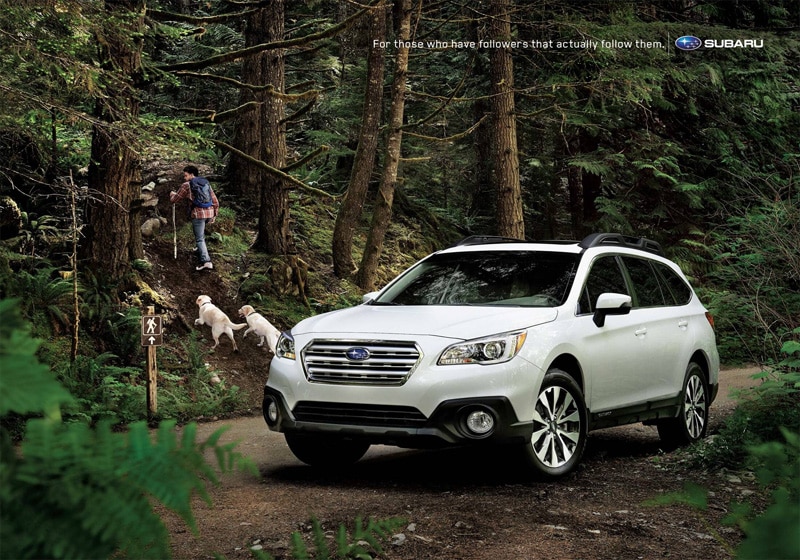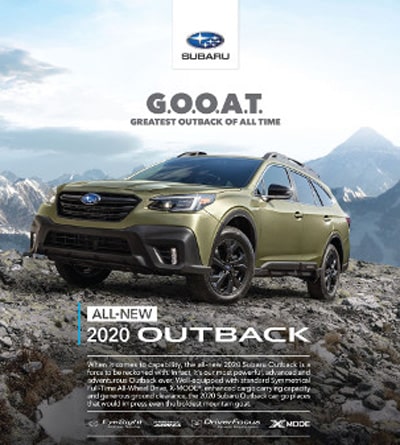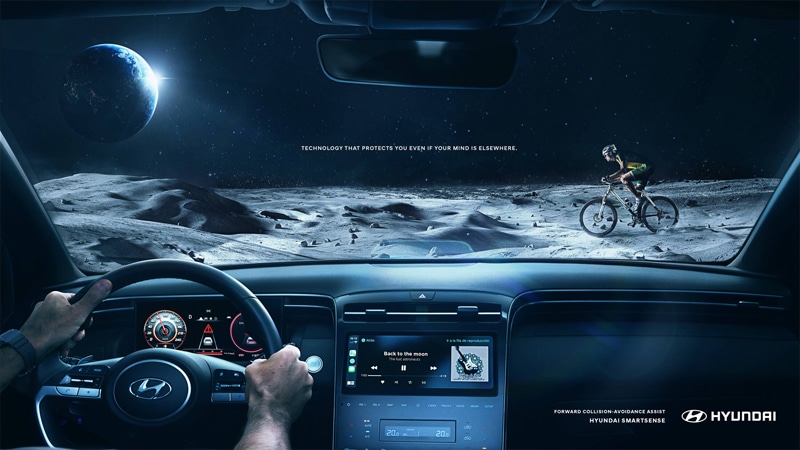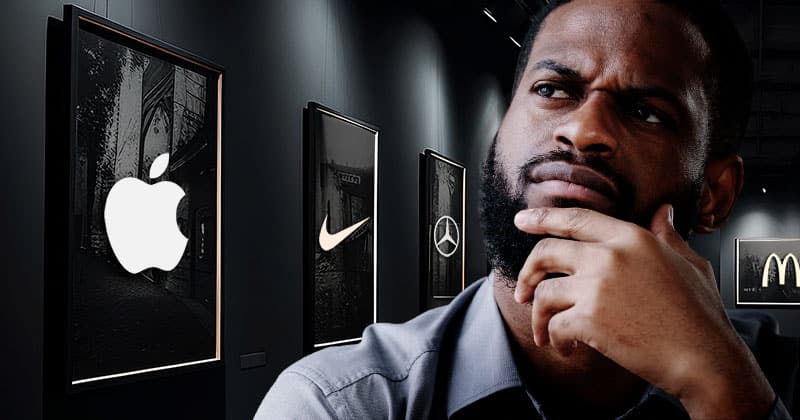Brand marketing is an approach to communications, sales, products, and services that grows the asset of brand equity.
This post was originally published on May 12, 2018 and was significantly rewritten on June 10, 2023.
Starting a business or a career in marketing can be both exciting and daunting. One of the challenges is understanding the intricacies of marketing. Colleagues and service providers may talk about brand marketing as if everyone knows what it is, and it is easy to get lost and confused.
My name is Colin Finkle, and I have worked in marketing with brands such as Phillips, Cadbury, and Walmart. I am the founder of BMB: Brand Marketing Blog, and I have run my own agency focused on building the brands of small businesses so they can compete with the big players.
Brand marketing is an approach to advertisements, promotion, and communications that fosters a long-term relationship between the brand and the customer. A piece of brand marketing says that the person or company is uniquely qualified to understand and serve a particular type of customer.
Brand marketing builds the value of a company because it is an investment in making future business more likely and profitable. This value is called brand equity.
Brand marketing is different from product marketing which talks about the features and benefits of the product rather than the brand more broadly.
Brand marketing is also different from direct-response marketing which focuses on getting the customers to make a purchase or take an action immediately. Learn more about how direct response marketing can quickly achieve business goals, but can lead to long term risks and downsides in our article on the topic.
Companies and people engage in brand marketing, product marketing, and direct-response marketing. It depends on the context of the ad or communication. All are pieces in a healthy marketing mix. Brand marketing usually comes first in the customer journey.
Brand marketing is not mutually exclusive. Elements of brand marketing like logos, imagery, taglines, colors, and fonts can be included in pieces that focus on the product or the sale.
An example of brand marketing is this Subaru ad.

This Subaru ad speaks to a customer who values time in nature. The marketers behind the ad are trying to build the brand association between “Subaru” and “nature” in the customer’s mind.
The copy (“For those who have followers who actually follow them.“) pokes fun at the difference in values between a person who spends time in nature versus time on social media.
It is important to note that Subaru also puts out product marketing ads (“All New 2020 Subaru Outback”) and direct response marketing ads (“AWD: All Weather Drive Event”).
Product Marketing

Direct Response Marketing

Note that there are elements of brand marketing in all the ads: the logo, the nature imagery, consistent fonts, and colors. Brand marketing is not mutually exclusive.
Do all companies need to do brand marketing?
Not all companies need brand marketing.
Companies with products that are commodities would not benefit from brand marketing. If there is truly no way to differentiate products, such as raw steel, crude oil, or copacking, it would not matter if the product came from a company with a strong brand or no brand at all.
Providers of commodity products will brand themselves around the service of reliably providing and delivering commodity products. So even these companies cannot get around the need to brand themselves.
Companies or service providers that do not benefit from brand marketing are exceedingly rare.
All companies lie on a spectrum of how much their product or service depends on brand marketing. Commodity products are on one end of the spectrum, and premium products such as wine, luxury vehicles, and resorts, which benefit significantly from brand marketing, lay on the other side of the spectrum.
Brand marketing is one subset of marketing.
Marketing is a vast field that encompasses numerous activities. Brand marketing is just one of them.
Businesses can engage in many other marketing activities to promote their products or services. These can include email marketing, social media marketing, influencer marketing, and event marketing, to name a few. Each of these activities has its own unique benefits and can help businesses achieve different marketing goals.
Marketing is communicating with the goal of selling products or services to potential customers. Brand marketing is just one of the aspects of marketing; the part that speaks to the person or association that brings you the product or service.
What comes first: marketing or brand marketing?
Brand marketing and marketing happen in tandem, so neither comes first. Brand marketing is part of marketing overall.
But, to do almost any marketing activity effectively, an entrepreneur has to do some work on their brand first, such as having a graphic designer make a logo and choose colors and fonts. Brand marketing lays the foundation by establishing the brand’s identity, values, and positioning.
Levels of Brand Marketing
Basic Brand Marketing
- Logo
- Brand Colours & Fonts
- Website
- Signage
- Directory Listings
… and more.
Intermediate Brand Marketing
- Social Media & Email Marketing
- Market Research
- Defining Brand Promise
- Brand Marketing Campaign
- Net Promoter Score Surveys
… and more.
Advanced Brand Marketing
- Co-Branded Products
- Visual Language
- Viral Marketing
- Sponsorships
- Superbowl Ad
… and more.
Brand marketing is important because it grows the value of the company.
Many first-time entrepreneurs and small to medium-sized business owners view spending on marketing as an expense. At the same time, money spent on building and maintaining assets like machinery, intellectual property, and location are considered capital investments.
A brand is no different from any other business asset.
Brand marketing focuses on marketing, so it is an investment in building an asset called brand equity. Brand equity is the portion of a company’s value or market cap attributable to a company’s brand.
All business assets have value because they generate future revenue and profits. A machine in a factory, a facility for a restaurant, or code on a server has value because it makes selling a product possible.
A strong brand makes future sales possible, like other business assets. Some customers would not buy from a company or care about a product if it did not come from a reputable brand.
A strong brand reduces costs, like other business assets. Customer acquisition costs decrease as a brand strengthens because you need to run fewer ads and/or reduce the time a salesperson needs to close a deal.
Brand marketing is the opposite of direct response marketing.
As I write this, I am in a Hyundai dealership lounge waiting for my wife’s car to be serviced. A big screen TV is annoying me with an infomercial for Dr-Ho’s Pain Therapy System. Hyundai and Dr-Ho cannot have more different approaches to their marketing.
Dr-Ho practices direct response marketing. Direct response marketing is when the advertisement urges you to act immediately. The stereotypical example of direct response marketing is an infomercial, but now you see the tactic in social media marketing and crowdfunding.

Companies with products with a catchy benefit that doesn’t hold up to scrutiny use direct response marketing. Direct response marketers are not above psychological tricks and high-pressure sales because they have no fear of losing the relationship with the customer. There is no ongoing relationship.
Hyundai practices brand marketing. They are trying to establish a mutually beneficial, ongoing relationship with someone via their communications, sales, product, and service.

Hyundai does not expect any of their ads or touchpoints to result in a sale directly; rather, the total will build a relationship. One ad might make you aware of a brand. Another ad may introduce the product. They have a website with information on features for customers who express interest, and on and on.
Hyundai is interested in all of the brand cycle. In contrast, Dr-Ho is only interested in the ‘Evaluation’ and ‘Purchase’ phases. As a result, the value of Hyundai’s brand always increases, while Dr-Ho’s brand equity builds only slightly.
Hyundai’s brand will survive generations, whereas Dr-Ho’s would stop if the infomercials stopped.
Brand marketing is different but works alongside product marketing.
Product marketing is promoting and advertising a particular product highlighting its features and benefits to increase sales. It involves understanding the needs and values of the people in the target market and developing effective messaging and visuals to showcase the product’s features and benefits.
Companies focus on product marketing when launching a new product. Product launches must communicate that the product is new, has features and benefits beyond competitive products, and fits the customer’s values. During the launch, companies will switch their marketing spend away from brand marketing and into product marketing.
For instance, Nike’s product marketing strategy for its running shoes includes creating visually appealing ads featuring professional athletes, highlighting the shoes’ advanced technology, and emphasizing their durability and comfort.

Product marketing differs from brand marketing because the ads or promotional materials focus on a specific product rather than the overall brand.
Nike can and does create ads about the brand without focusing on a specific product. The goal is to get customers to know, like, and trust Nike and make them buy one of the many products Nike is offering.
Brand and product marketing are often mixed in any ad and marketing budget. Many ads have elements of brand marketing (like the logo) and product marketing (like a call out on a key feature.) Marketing managers also spend some of their budgets on brand marketing ads and product marketing ads; in the customer journey, brand marketing comes first, so the customer is aware of the brand and trusts the claims in the product marketing, which comes later.
Conclusion
In conclusion, brand marketing is crucial for any business looking to establish itself as a leader.
By creating a strong brand identity, businesses can attract and retain customers, differentiate themselves from competitors, and build trust and loyalty with their audience. Effective brand marketing can also increase brand recognition, improve brand reputation, and ultimately drive sales and revenue.
Investing in brand marketing is a long-term strategy that can pay off in the long term. Unlike other forms of marketing, it can increase the value of a company while promoting products and services.
The question is: do you want your product or service to have a strong brand behind it?

Leave a Reply